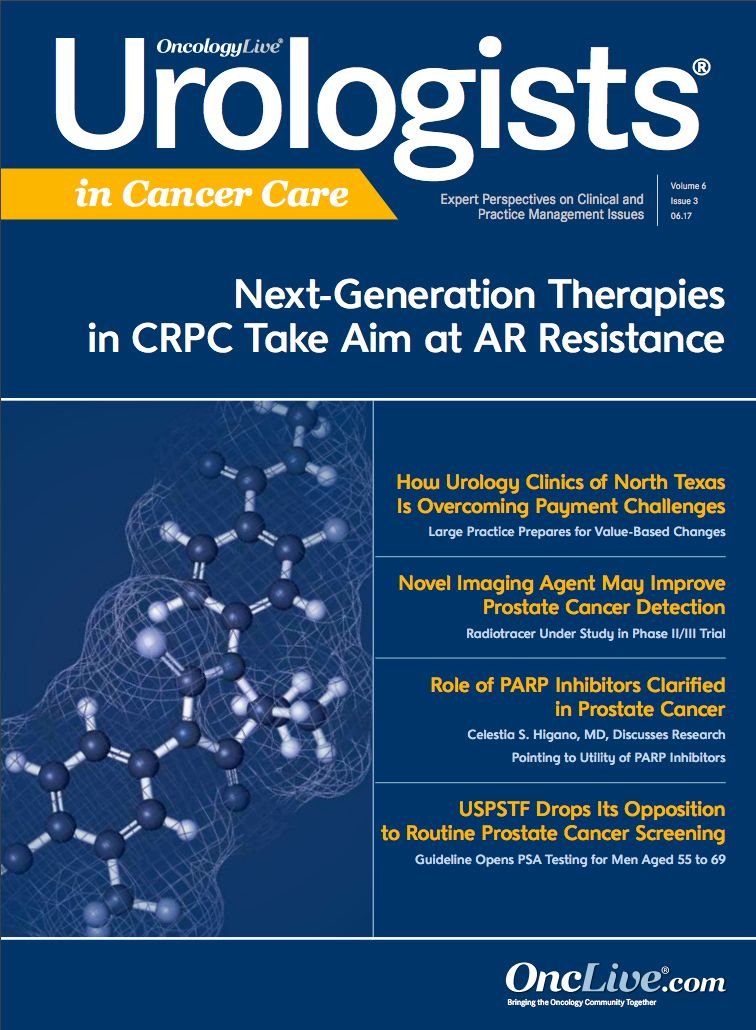Recent Patterns Indicate PSA Testing Halt in Decline
A recent nationally representative study published in JAMA Internal Medicine found that previously reported declines in prostate-specific antigen testing have not continued in recent years, and that approximately one-third of men age 50 years or older still receive routine PSA tests.
Prostate Cancer

A recent nationally representative study published in JAMA Internal Medicine found that previously reported declines in prostate-specific antigen (PSA) testing have not continued in recent years, and that approximately one-third of men age 50 years or older still receive routine PSA tests.1
In 2008, the US Preventive Services Task Force (USPSTF) recommended against routine PSA-based prostate cancer screening among men 75 years or older, and in 2012, they recommended against routine PSA testing for men of all ages. As a result of these recommendations, PSA screening rates declined from 37.8% in 2010 to 30.8% in 2013 among men 50 years or older, resulting in substantial declines in reported prostate cancer incidence.2
Another recent study reported a modest short-term (from 2011 to 2013) increase in the incidence of metastatic prostate cancer among men 75 years or older. This study found that in men younger than 75 years, there was an increase in the proportion of men presenting with distant metastases from 2.7% (95% CI, 2.5%-2.9%) to 4% (95% CI, 3.8%-4.2%) and in the proportion presenting with intermediate- and highgrade prostate cancer from 46.3% (95% CI, 45.9%-46.9%) to 56.4% (95% CI, 55.9%-56.9%) (P <.01 for both).3
This study demonstrated a significant increase in distant metastases at diagnosis in men 75 years or older, and notes that this may be a result of the 2008 and 2012 USPSTF recommendations against prostate cancer screening in this patient population.
In the JAMA study, investigators gathered data on 19,690 respondents who were 50 years or older from the 2010, 2013, and 2015 National Health Interview Survey (NHIS) database, with response rates of 60.8%, 61.2%, and 55.2%, respectively. A total of 16,196 men were included in the analysis, after those who reported a history of (or were missing data on) prostate cancer diagnosis (n =1115) or PSA testing (n=1574) or who had PSA testing for nonscreening reasons (n=805) were excluded.1
Of the 16,196 respondents, more than half (59%) were age 50 to 64, 26% were age 65 to 74, and 15% were older than 75. While data was missing for 10 respondents, 75% had visited a primary care physician in the past 12 months. Among men 50 years or older, unadjusted PSA testing rates for routine reasons in the past year decreased from 38.3% in 2010 to 31.5% in 2013 (P <.001) and remained stable at 32.1% through 2015 (P = .62).1
Adjusted analyses were similar, where PSA testing in the past year was significantly lower in 2013 than in 2010 (screening rate ratio [SRR], 0.83; 99% CI, 0.77-0.89), but was not significantly different between 2015 and 2013 (SRR, 0.99; 95% CI, 0.91-1.08). The pattern of declining PSA testing between 2010 and 2013, but not between 2013 and 2015, was similar across age groups.
Thus, the study concluded that previously reported declines in PSA testing have not continued in recent years, and approximately one-third of men 50 years or older still receive routine PSA testing. Previous declines in routine PSA testing between 2010 and 2013 did not continue in the most recent time period analyzed (between 2013 and 2015).
The study noted that continued evaluation on how testing patterns influence prostate cancer outcomes over the long term are still needed.
References
- Fedewa SA, Ward EM, Brawley O, Jemal A. Recent patterns of prostate-specific antigen testing for prostate cancer screening in the United States. JAMA Intern Med. Published online April, 24, 2017. doi: 10.1001/jamainternmed.2017.0340
- Jemal A, Fedewa SA, Ma J, et al. Prostate cancer incidence and PSA testing patterns in relation to USPSTF screening recommendations. JAMA. 2015;314(19):2054-2061. doi: 10.1001/jama.2015.14905
- Hu JC, Nguyen P, Mao J, et al. Increase in prostate cancer distant metastases at diagnosis in the United States. JAMA Oncol. Published online December 29, 2016. doi: 10.1001/jamaoncol.2016.5465.




